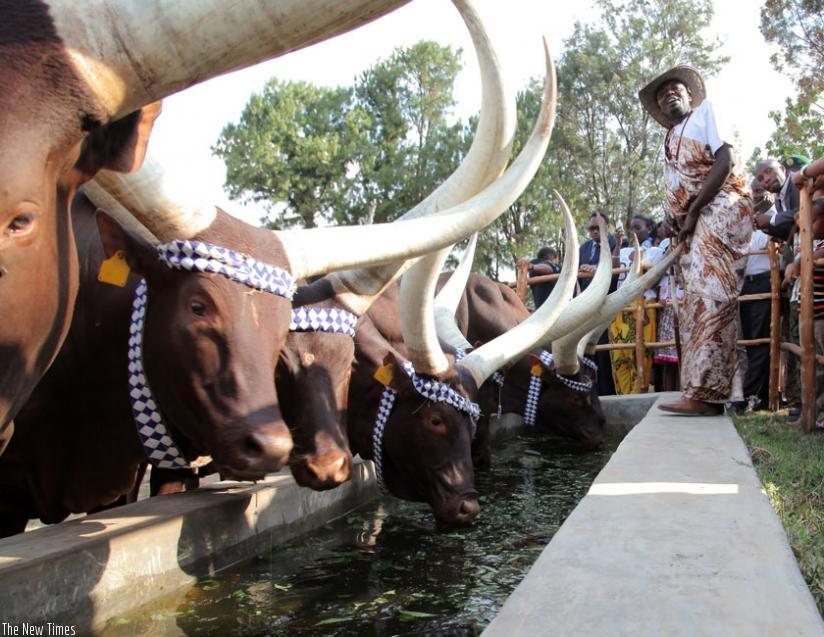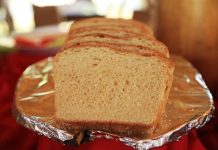Africa-Press – Rwanda. “Do you want to see the cows?” said the ticket seller at the King’s Palace and Museum in Nyanza.
“Huh?”, I responded.
“Do you want to pay extra to see the cows as well?” he elaborated.
“Why would I pay extra to see some cows?” I inquired.
“You will see”, he smiled.
My Rwandan friend strongly urged me to pay to see the cows and I was so glad that I did when we later turned a corner behind one of the traditional conical residences on the grounds of the King’s Palace.
In front of us were lounging six of the most beautiful, elegant, long-horned Inyambo cows that I had ever seen even though I had lived for nearly 20 years in Austin, Texas, which also reveres its longhorn cattle. One of these cows was even the proud mascot of the University of Texas (UT) Longhorns football team, who would attend every home game.
Unfortunately, this mascot would have to suffer the blast of a live cannon shot every time the Longhorns scored a touchdown, unlike the Inyambo cows in Nyanza, who were sweetly serenaded by their trainers.
What I learned very quickly was the vital symbolism and value of cows to Rwandan culture. This was both for their role in past ceremonies in honor of the king and more importantly for their contribution to modern life as part of the Girinka ‘Home Grown Solution’, launched in 2006 to help poor families improve their well-being by receiving cows from which they could get milk and other by-products.
This initiative was based on King Mibambwe’s decree back in 1660 that, “no Rwandan child was ever to lack daily milk again while others had plenty”. Clearly, many Rwandans still take this edict very seriously. There are milk bars are all over the city of Kigali where you can drink milk – cold or hot – or even a fermented, yoghurt-like drink, called Ikivuguto.
One adult friend of mine drinks six glasses of room-temperature milk a day. On a warm day, this columnist prefers to chug a tall glass of ice-cold milk all in one go.
Some people were only half-jokingly calling for a state of emergency to be declared when a combination of the dry season and transportation blockages recently resulted in lower milk production, empty shelves in the grocery stores and price gouging for dwindling supplies. The crisis seems to have thankfully abated for now.
And then there is ‘Inkwano’, the traditional practice of a groom presenting cows (or agricultural tools) to a bride’s family in recognition of their efforts in raising their daughter and preparing her for marriage. This is common in other African countries as well, such as the practice of ‘Lobola’ in many South African cultures.
But how many cows are appropriate? Offer too few and you might be seen as disrespecting your future bride and her family. Offer too many and you may be seen as a show-off or you may be putting yourself into serious debt to buy them.
This is a particularly topical dilemma for this columnist right now as I have the great honour and delight to be marrying my Rwandan fiancée on 6 November in a small family ceremony in central Kigali. She also likes to drink ice-cold milk, which means we are clearly made for each other.
As urban dwellers, we would normally just be talking about the financial value of the cows, not the animals themselves. But my fiancée’s mother actually has cows of her own out at her small farm in Rwamagana, 60 kilometres East of Kigali.
So if I were to buy cows, where would I find them? How would I know they are healthy? How would I transport them? Where would I keep them until they are presented? If I were to keep them at home, what would I do with the big, stinky ‘presents’ that the cows would leave on the grass in my garden?
So many questions but where could I find the answers? Rwandan friends told me that it could be anywhere between one cow and 20 and they counseled me to pose these questions directly to my fiancée and her family. When I did so at a recent dinner, they laughingly refused to give me any guidance at all as they felt it would be rude and inappropriate to make any demands.
Most of my muzungu friends here had no clue what to tell me but one close Congolese friend texted me, “Jeremy, a (Rwandan) friend of mine recently did the same as you. He paid one million francs, the value of two cows. If you could pay two million, that would be quite understandable. Four million is way too much. At the end of the day, the number of cows doesn’t matter. It is symbolic.”
My fiancée and her mother finally took pity on me and gave me some hints on what might be the appropriate amount of ‘Inkwano’ and whether the gift should be in actual cows or just in money.
Fortunately, money seems to be just fine in this case but they swore me to secrecy on the actual amount, which I will be transferring as soon as the domestic banking system is up and running once more after recent technical disruptions.
But what if the banking system is not functioning again before the wedding? Will I still be allowed to get married? Just in case, maybe I need to arrange a barter deal with a cowherd to exchange my adopted street dogs and beloved Texan cat for real-live cows? What should I do? Help, please!!
This is the latest in a monthly series of personal columns, entitled “Letter from Kigali”. Each month, local resident and writer, Jeremy Solomons – who was born and educated in England of Jewish, Lebanese and Persian heritage and naturalized in the USA – shares a unique perspective on what is happening in Rwanda, Africa and the rest of the world.
For More News And Analysis About Rwanda Follow Africa-Press






